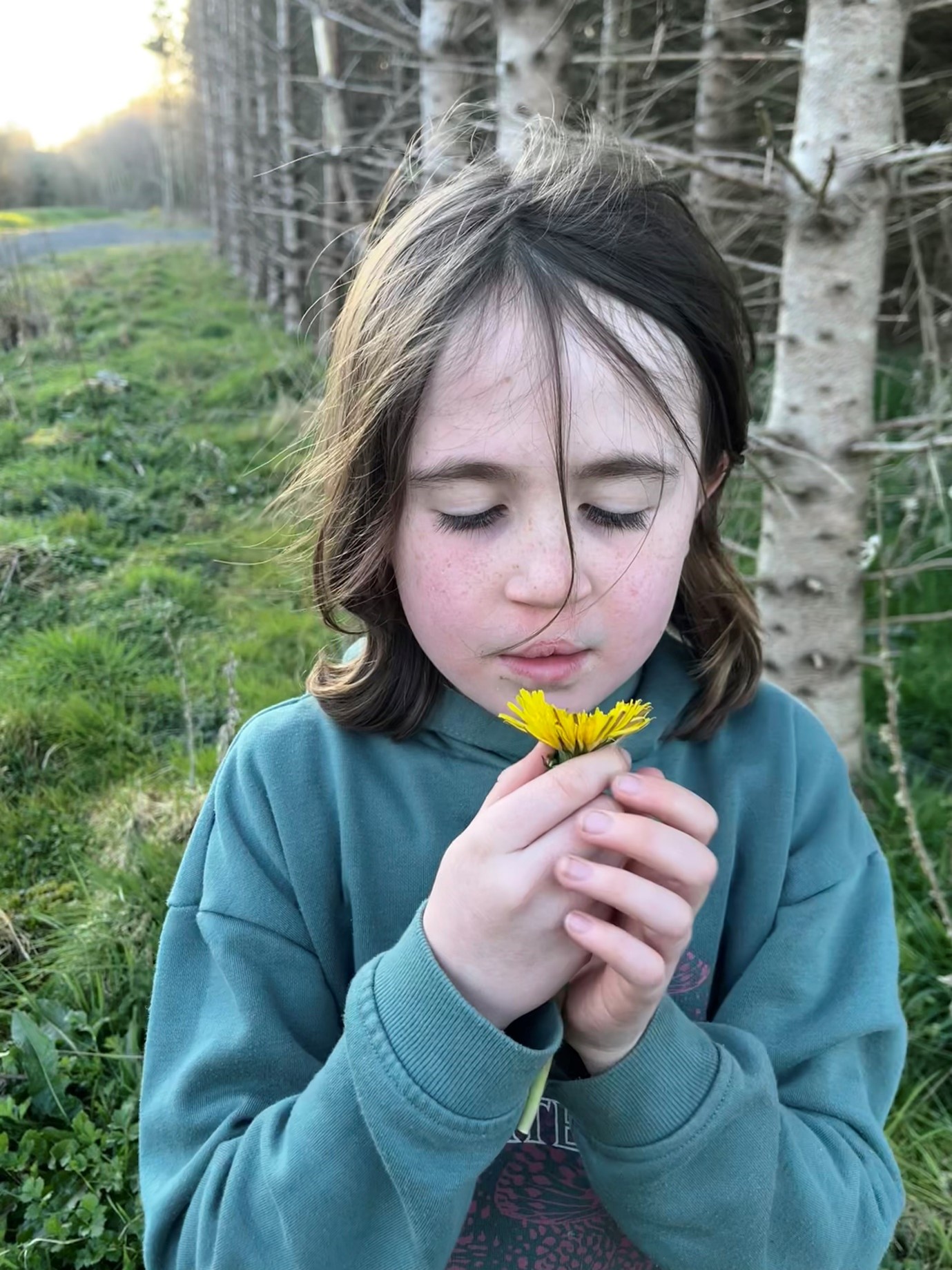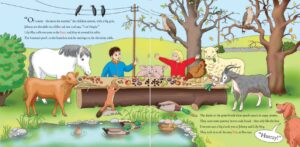Foraging in Ireland during the summer and early autumn months.
Us Irish have a great history of foraging food from the lands and it’s a very prominent memory from my own childhood be it berries, nuts or mushrooms. There really is nothing more rewarding than gathering up some free food and enjoying it, especially with children who knock great sport out of a taste of ‘wild’ living.
This was most of the inspiration behind my book ‘The Farmyard Féasta’ which is a celebration of the harvest in Ireland. The children make the most of all of the wild food available and have a feast on a fallen oak tree with Irish wildlife and native farm animals.
Remember, double check the identity of what you have picked before eating it by either using a book or the internet.
For the Salad Lovers
Wild Garlic, Dandelion Leaves and Stalks, Curly Dock Leaves and Fresh Hawthorn Leaves and Flowers all go down a treat during the summer. The dandelion especially is so versatile and packed with nutrition. Every single part of it is edible, leaves, stalks and flowers. One of my favourite trees, the Hawthorn (known for all its fairy stories in Irish folklore) is another gem found easily throughout the country. Young leaves, flower buds and berries are all edible. They can be a nice addition to spruce up a salad. Wild garlic is so distinctive in taste and also widely available in wooded areas, just use your nose! There are lots of recipes for wild garlic from salads to pesto’s and the whole plant is edible.
Curly Dock Leaves have a lemony, sour flavour. Younger dock leaves are generally the strongest flavour. You can use them in a salad, add them to stir-fry’s or soup’s and stew’s. The bright yellow flower of the prickly Gorse bush are also delicious on salads and the buds can be eaten like capers.
Speaking of Soups
Nettles, Sea Spaghetti and Wild Garlic can all make a lovely soup. Stinging nettles are found in nearly every field in the country. Be careful when collecting, gloves are a must. Everything is edible except the root. And don’t worry, once cooked there’s no sting! Sea spaghetti is a seaweed found along the shores of Ireland. A great one for kids to have fun with, there are lots of recipes for this gem online.
Wood Sorrell is a small plant that resembles a shamrock. It is found in wooded areas and is a great indicator of where ancient forests once stood if you find it growing in a remote location. Packed with vitamin C it’s great in pesto’s, soups and as a salad garnish. It tastes a bit like lemons.
For the Tea Lovers
Stinging Nettles make a great tea when strained and are packed with vitamins and nutrients. They are believed to offer a range of benefits from helping with hay-fever to reducing inflammation and even acne.
Wild Mint is another great one for tea. They have narrow pointed leaves and lilac-blue flowers and grow in damp places. As with most teas, wash the leaves and let soak into a tea with boiling water.
Bramble leaf tea has a light taste and is easy to drink. The leaves from the plant that gives us one of my personal favourites, blackberries, were traditionally used to treat a sore throat, sore gums or mouth ulcers.
Some Fruit and Nuts
Probably my favourite thing to forage are wild raspberries and they are beyond delicious. So delicate and sweet, eat them alone or make jams or tarts. The same can be said for the blackberries and wild strawberries. Bilberries are another common berry found in found on bushes in heathland and low mountainside resembling blueberries.
The dark, blue-black elderberries grow in clusters and are so versatile when they are cooked (do not eat them raw). They make very nice jams, chutneys and cordials and even wine! The flower of the elder can also make wine and the ingredients are both abundant and free! Elderflowers can be found in hedgerows across Ireland, and resemble white clusters of dainty, tiny flowers, best foraged in midsummer. Sloes are also another berry that you’ll find in hedgerows, although their sourness is certainly an acquired taste!

Later in the year crab apples, mushrooms and nuts like hazel will take centre stage as we enter into autumn. The hazel tree is another great Irish tree for stories and folklore. The Salmon of Knowledge himself ate 9 hazel nuts that held the wisdom of the world many moons ago!
So, I hope this is useful and will inspire some adventures outdoors over the coming weeks and months. Remember, it’s best to double check the identity of everything before ingesting it. There are lots of foraging books available from your local library along with free online guides.
Wishing you a wonderful summer.







